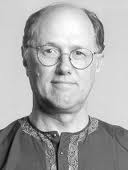Obstacles to Building Peace Can Be Overcome
By Dr George Wolfe
 No matter what form of government people are living under, political posturing by national leaders and the quest to stay in power creates one of the biggest obstacles to peace-building. When their country is threatened or attacked, there is the tendency for politicians to talk tough, over-react, or respond disproportionately. The maxim “An eye for an eye and a tooth for a tooth” was originally intended to temper revenge so that injustice can be responded to in a way that is proportional to the initial hostile infraction. Unfortunately, an act of retaliation tends to exceed the damage caused by the original aggressor, resulting in escalation, rather than a cessation, of the conflict. Hence came Mahatma Gandhi’s famous retort: “An eye for an eye winds up making the whole world blind”.
No matter what form of government people are living under, political posturing by national leaders and the quest to stay in power creates one of the biggest obstacles to peace-building. When their country is threatened or attacked, there is the tendency for politicians to talk tough, over-react, or respond disproportionately. The maxim “An eye for an eye and a tooth for a tooth” was originally intended to temper revenge so that injustice can be responded to in a way that is proportional to the initial hostile infraction. Unfortunately, an act of retaliation tends to exceed the damage caused by the original aggressor, resulting in escalation, rather than a cessation, of the conflict. Hence came Mahatma Gandhi’s famous retort: “An eye for an eye winds up making the whole world blind”.
Political pressures make it difficult for leaders to seek reconciliation for fear they may appear weak, and the escalation of violence merely adds to the history of hostility that widens the gulf between nations or peoples in conflict. For these reasons, peace-building efforts generally have more lasting success when they originate on the grassroots level. Over time, grassroots movements change the political landscape. New generations step into leadership roles with a less tarnished view of history, and politicians emerge that are able to entertain reforms.
One can see how this played out in the United States as the civil rights movement changed attitudes in America toward racism and segregation. In the former Soviet Union, it was the younger generation that produced a leader like Mikhail Gorbachev who brought a new vision to Russia in the late 1980s. With the emergence of the Green Movement in Iran, it is likely we will see the liberalization of Iranian politics if the West allows time for economic sanctions to work and younger leaders in Iran gradually enter into positions of influence. As Senator John McCain has astutely observed, “The birth of the Green Movement . . . should convince us that Iran will have a democratic future. That future may be delayed for a while, but it will not be denied.”
In Israel, there are significant efforts that exemplify grassroots peace-building and which show long-term promise. One is the Nazareth Academic Institute (NAI) located in Nazareth, Galilee, in Israel. Affiliated with Mar Elias College, the program brings together Israeli and Palestinian students from diverse religious backgrounds. In addition, parents have come together to establish several Arab-Jewish bilingual elementary schools in Israel with each classroom presided over by an Arab and an Israeli teacher.
Afghanistan has also been a stage for peace-building through education. A consortium of schools that include Indiana University has instituted a teacher education program to improve the educational system in Afghanistan. There is also a multi-faith, philanthropic organization in Muncie known as Awaken that has built a school and a women’s medical clinic in Afghanistan. These facilities are now rendering services in a remote Afghan village.
In addition, Dr. Lindsey Blom, Assistant Professor of Sport & Exercise Psychology at Ball State University, in conjunction with Dr. Larry Gerstein and the Ball State Center for Peace and Conflict Studies, recently received funding from the US Department of State. Their project uses soccer as a means of teaching conflict resolution skills to Muslim and Christian coaches and students in the country of Jordan.
These grassroots efforts illustrate how we can build cooperative relationships and provide medical, educational, and employment opportunities as our means of overcoming hatred. Military solutions leave in their wake repressed hostilities; strategies of peace-building and reconciliation entice people to embrace positive alternatives to violence.
George Wolfe is the Coordinator of Outreach Programs for the Ball State University Center for Peace and Conflict Studies. He is also a trained mediator and the author of The Spiritual Power of Nonviolence: Interfaith Understanding for a Future Without War.
This article was published in The Star Press, Muncie, Indiana, on February 4, 2012.


